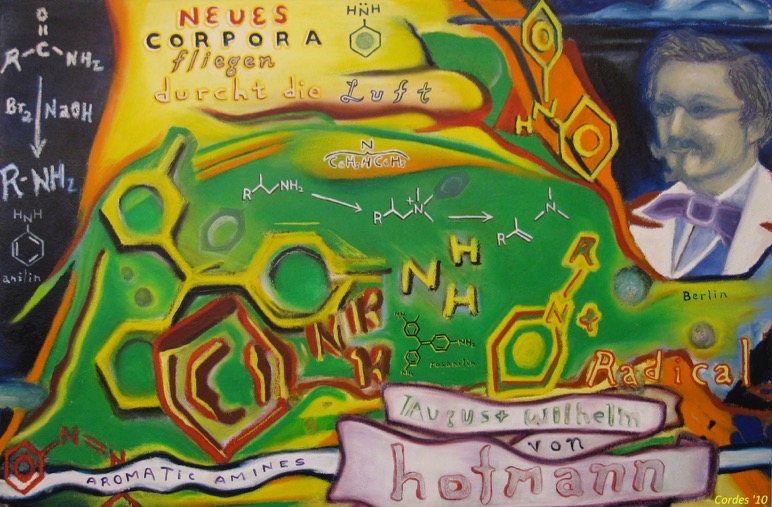Our Chemical Hero




August Wilhelm Hofmann (1818-1892) was an amazing chemist! He is certainly among the most celebrated of nineteenth century chemists. The reasons for his popularity were many. On top of an inherent enthusiasm for exploration, Hoffman seems to have had an easy and natural social grace. Having trained with the famous Liebig, Hofmann was a dynamic and creative chemical researcher and is mostly famous for his work on the nitrogen based compounds obtained from coal tar. In this work he pioneered the synthesis of a number of new and important compounds, including many of the new colorful and permanent dyes, such as rosaniline, used in the emerging textiles industries. He was also responsible for developing a number of fundamental organic transformations. Several of these, such as the Hofmann Rearrangement and the Hofmann Elimination, were named in honor of the great chemist. He was also known as an excellent teacher and was among the very first to use physical models of molecules in his teaching and demonstrations. Having spent many years at the Royal College of Chemistry in London, Hofmann returned to Germany where he eventually became the Rector of the University of Berlin.
Back in Germany, Hofmann, was a bold defender of the rights of Jewish students and faculty who were increasingly under attack by anti-Semitic organizations who wanted Jews removed from the University. Amazingly, these anti-Semites included university sanctioned student groups! Despite only lukewarm support and often outright hostility from his Christian colleagues, Hofmann battled the anti-Semites and managed to maintain his position in Berlin and accomplish great research even as anti-Semitism continued to grow in the newly emerging German state.
Many thanks to Dr. Daniel Perrine of Loyola Marymount in Baltimore, MD for correcting an earlier (and quite incorrect) biographical detail and for interesting discussions on Hofmann and his place in the chemical communities of 19th century Europe.